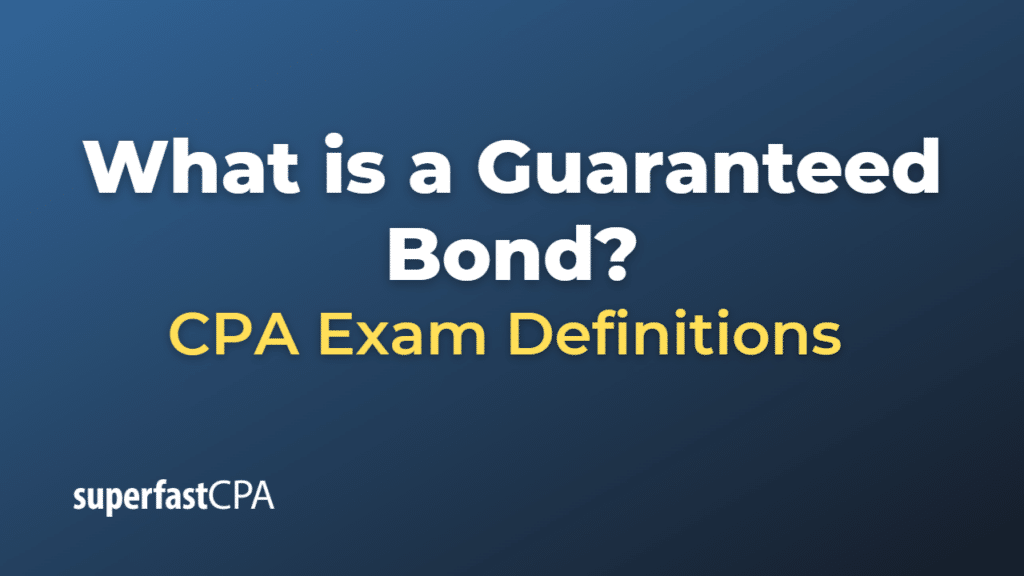Guaranteed Bond
A guaranteed bond is a type of debt security in which the repayment of the principal amount, along with the interest, is assured by a guarantor. The guarantor can be a corporation, a government agency, or another entity. This guarantee provides an additional level of security to bondholders and often results in the bond receiving a higher credit rating.
The concept of a guaranteed bond is commonly used in situations where a subsidiary company issues bonds and the parent company guarantees the bonds. This is a method for the subsidiary to leverage the creditworthiness of the parent company to receive better terms on the bond issue.
Guaranteed bonds are considered safer investments because the guarantee provides an extra layer of protection against default. If the issuer can’t meet the payment obligations, the guarantor is responsible for making the bondholders whole. However, the safety of the bond still ultimately depends on the creditworthiness of the guarantor. If the guarantor encounters financial difficulty, the bond could still default. Therefore, potential investors should evaluate both the issuer’s and the guarantor’s financial stability before investing.
It’s important to note that even though guaranteed bonds have lower risk compared to non-guaranteed bonds, they usually offer lower yields as well. This is because the perceived decrease in risk makes these bonds more appealing to investors, allowing the issuer to offer a lower interest rate.
Example of a Guaranteed Bond
Imagine a large multinational corporation, Company A, which has a well-established track record and strong financial health. It has a subsidiary, Company B, which is relatively smaller and less well-known.
Now, suppose Company B decides to raise capital for its projects by issuing bonds. Given its lesser-known status and weaker financials compared to its parent, investors might be wary of the risk and demand a high yield to compensate.
To make the bonds more attractive and affordable, Company A might step in and provide a guarantee. This means that if Company B were unable to make its bond payments, Company A would be responsible for them.
Because Company A has a strong credit rating, this guarantee makes the bonds much less risky from the investors’ perspective. This would allow Company B to pay lower interest rates on its bonds, making the fundraising process cheaper and more efficient.
However, it’s essential to remember that while the guarantee decreases the risk, it doesn’t eliminate it entirely. If both Company B and Company A were to run into financial trouble, the bondholders could still face losses. Therefore, prospective bondholders should still thoroughly assess the financial health of both the bond issuer and the guarantor before investing.













